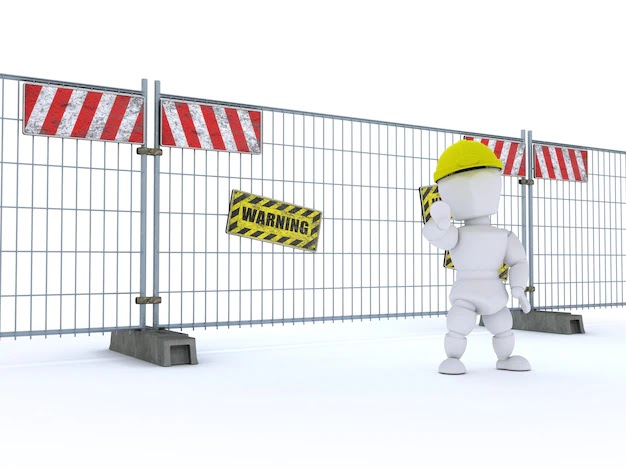
Home Safety Checks
I. Why Regular Home Safety Checks Are Important
Home safety checks are preventative measures that help ensure your living environment remains safe for you and your family. Many hazards, such as electrical issues, fire risks, and structural damage, may not be immediately noticeable but can lead to serious accidents if not addressed. By conducting regular inspections, you can:
1. Prevent Accidents: Regular checks help you spot potential dangers before they cause harm.
2. Maintain Property Value: Addressing issues like leaks, mold, or structural damage early can prevent costly repairs and preserve your home's value.
3. Ensure Peace of Mind: Knowing your home is safe allows you to relax and enjoy your living space without worry.
II. Conducting a Comprehensive Home Safety Inspection
To perform a thorough home safety inspection, it's important to focus on several key areas of your home. This includes electrical systems, fire safety, structural integrity, water hazards, and general household safety. Below is a step-by-step guide to help you systematically inspect each aspect.
1. Electrical Safety
Electrical issues are a leading cause of home fires and accidents. Regularly inspecting your electrical systems can prevent dangerous situations from developing.
- Check Outlets and Switches: Ensure all outlets and switches are working correctly. Look for any signs of discoloration, buzzing sounds, or warmth, which could indicate an electrical problem.
- Inspect Cords and Appliances: Examine all electrical cords and appliances for fraying, cracks, or exposed wires. Replace damaged cords and avoid using faulty appliances.
- Test Ground Fault Circuit Interrupters (GFCIs): GFCIs are designed to protect against electrical shock. Test them monthly by pressing the "test" button, followed by the "reset" button to ensure they are functioning properly.
- Avoid Overloading Circuits: Do not overload outlets with too many devices, as this can cause overheating and potentially lead to a fire.
2. Fire Safety
Fires can start unexpectedly, but with the right precautions, you can minimize the risk and ensure that your home is prepared in the event of a fire.
- Install and Test Smoke Detectors: Ensure that smoke detectors are installed on every level of your home, especially near bedrooms. Test them monthly and replace the batteries at least once a year.
- Check Fire Extinguishers: Have at least one fire extinguisher in your home, preferably in the kitchen and near potential fire hazards. Regularly check the pressure gauge to ensure it’s in the green zone and replace the extinguisher if necessary.
- Plan an Escape Route: Create and practice a fire escape plan with your family. Ensure that all windows and doors can be easily opened and that everyone knows the quickest way to exit the home safely.
- Avoid Fire Hazards: Keep flammable items, such as paper, fabric, and chemicals, away from heat sources. Ensure that fireplaces, stoves, and heaters are used safely and maintained properly.
3. Structural Integrity
The structural integrity of your home is critical to ensuring that it can withstand natural wear and tear, as well as extreme weather conditions.
- Inspect the Roof: Regularly check your roof for missing, cracked, or damaged shingles. Look for signs of water damage or leaks in the attic, which could indicate a compromised roof.
- Examine the Foundation: Walk around your home’s exterior and inspect the foundation for cracks, shifts, or signs of water intrusion. Even small cracks can lead to bigger problems if not addressed.
- Check Windows and Doors: Ensure that all windows and doors are properly sealed and can close securely. Gaps or cracks around frames can let in moisture and pests, leading to damage over time.
- Monitor Walls and Ceilings: Inside your home, look for cracks in walls and ceilings, which could indicate settling or structural issues. Also, check for signs of mold or water damage.
4. Water Hazards
Water damage can cause significant problems, including mold growth, structural damage, and health issues. Regular checks can help prevent water hazards from escalating.
- Inspect Plumbing: Regularly check all plumbing fixtures, including under sinks, around toilets, and behind appliances like dishwashers and washing machines, for leaks. Even small leaks can lead to significant water damage over time.
- Check Gutters and Downspouts: Ensure that gutters and downspouts are clear of debris and are properly directing water away from your home’s foundation. Blocked gutters can cause water to pool and seep into the structure.
- Monitor Water Heaters: Inspect your water heater for signs of corrosion, leaks, or other issues. Consider installing a leak detector near the heater to alert you to potential problems.
- Prevent Mold Growth: Mold thrives in damp environments. Regularly inspect areas prone to moisture, such as basements, bathrooms, and around windows, for signs of mold. If you find mold, clean it immediately with appropriate cleaners and address the moisture source.
5. General Household Safety
In addition to the specific areas mentioned above, general household safety is vital to ensuring your home remains a safe place to live.
- Secure Heavy Furniture: Anchor heavy furniture, such as bookcases, dressers, and TVs, to the wall to prevent them from tipping over, especially if you have children.
- Check for Trip Hazards: Inspect floors and stairways for potential trip hazards, such as loose rugs, electrical cords, or clutter. Ensure that stairs have sturdy handrails and are well-lit.
- Test Carbon Monoxide Detectors: Install carbon monoxide detectors in areas where fuel-burning appliances are used, such as near furnaces or gas stoves. Test them regularly to ensure they are working correctly.
- Store Chemicals Safely: Keep household chemicals, including cleaning products, out of reach of children and pets. Store them in a cool, dry place and ensure they are clearly labeled.
III. Creating a Home Safety Checklist
To ensure that all areas of your home are covered during safety inspections, consider creating a comprehensive home safety checklist. This checklist should include the following categories:
1. Electrical Safety
2. Fire Safety
3. Structural Integrity
4. Water Hazards
5. General Household Safety
Under each category, list specific tasks and items to check. For example, under "Electrical Safety," include tasks such as testing GFCIs, inspecting outlets, and checking appliance cords. A checklist will help you stay organized and ensure that no aspect of your home is overlooked during inspections.
IV. How Often Should You Conduct Home Safety Checks?
The frequency of home safety checks can vary depending on the specific task. Here’s a general guideline:
1. Monthly: Test smoke detectors, carbon monoxide detectors, and GFCIs. Check for trip hazards and inspect plumbing fixtures for leaks.
2. Quarterly: Inspect fire extinguishers, test all windows and doors for proper sealing, and check the roof and gutters.
3. Annually: Perform a comprehensive inspection of the entire home, including the roof, foundation, electrical systems, and structural integrity. Consider scheduling a professional inspection every few years for a more thorough assessment.
V. When to Call a Professional
While many home safety checks can be done by homeowners, certain issues may require professional attention. If you discover significant structural problems, persistent leaks, electrical issues beyond simple fixes, or signs of mold, it’s important to call a professional. A licensed contractor, electrician, or plumber can provide the expertise needed to address these issues safely and effectively.

Conclusion
Regular home safety checks are a proactive way to ensure your living environment remains safe and secure. By conducting thorough inspections of key areas such as electrical systems, fire safety, structural integrity, water hazards, and general household safety, you can identify potential hazards before they become serious problems. Creating and following a home safety checklist will help you stay organized and ensure that all aspects of your home are properly maintained. Remember, a safe home is a happy home, and taking the time to perform these inspections will provide peace of mind for you and your family.
FAQ
Ques 1: What are home safety checks, and why are they important?
Ans: Home safety checks involve systematically inspecting various aspects of your home to identify and address potential hazards. These checks are crucial because they help prevent accidents, maintain your property's value, and ensure a safe living environment for you and your family. By catching issues early, such as electrical faults, fire risks, or structural damage, you can avoid costly repairs and keep your home secure.
Ques 2: How often should I conduct home safety checks?
Ans: The frequency of home safety checks can vary depending on the specific task. Generally, it's recommended to conduct basic checks, such as testing smoke detectors and inspecting plumbing for leaks, on a monthly basis. More comprehensive inspections, including checking the roof, foundation, and electrical systems, should be performed annually. Regularly scheduled inspections help ensure that potential hazards are identified and addressed promptly.
Ques 3: What should I include in a home safety checklist?
Ans: A comprehensive home safety checklist should cover key areas such as electrical safety, fire safety, structural integrity, water hazards, and general household safety. Specific tasks might include testing GFCIs, inspecting smoke detectors, checking for leaks, securing heavy furniture, and examining the roof for damage. Creating a checklist ensures that all critical areas are reviewed during your safety inspections.
Ques 4: Can I perform home safety checks myself, or should I hire a professional?
Ans: Many home safety checks can be performed by homeowners, such as testing smoke detectors, inspecting outlets, and checking for trip hazards. However, if you discover significant issues like structural damage, persistent leaks, or electrical problems that require expert knowledge, it's advisable to hire a professional. A licensed contractor, electrician, or plumber can provide the necessary expertise to address complex issues safely.
Ques 5: What are the most common hazards found during home safety checks?
Ans: Common hazards identified during home safety checks include faulty electrical systems, fire risks (such as outdated smoke detectors or overloaded circuits), structural issues (like cracks in the foundation or roof damage), water hazards (such as leaks or mold), and general household risks (like unsecured furniture or trip hazards). Regularly inspecting your home for these hazards can prevent accidents and maintain a safe living environment.







Do Leave Your Comment